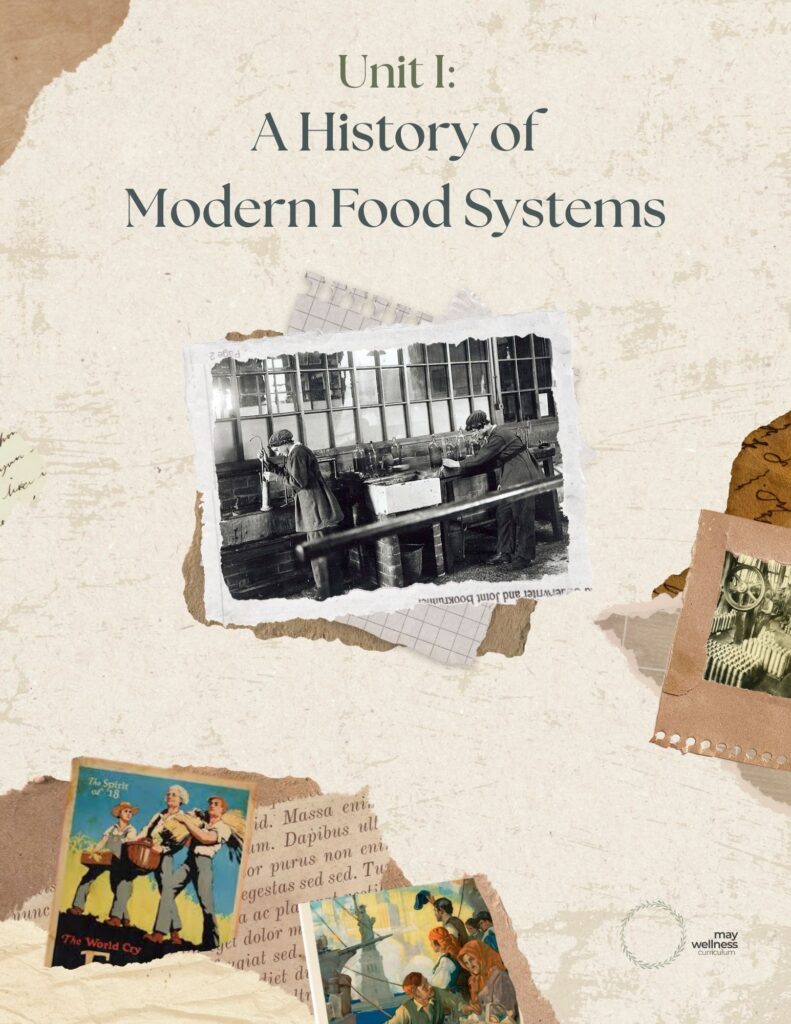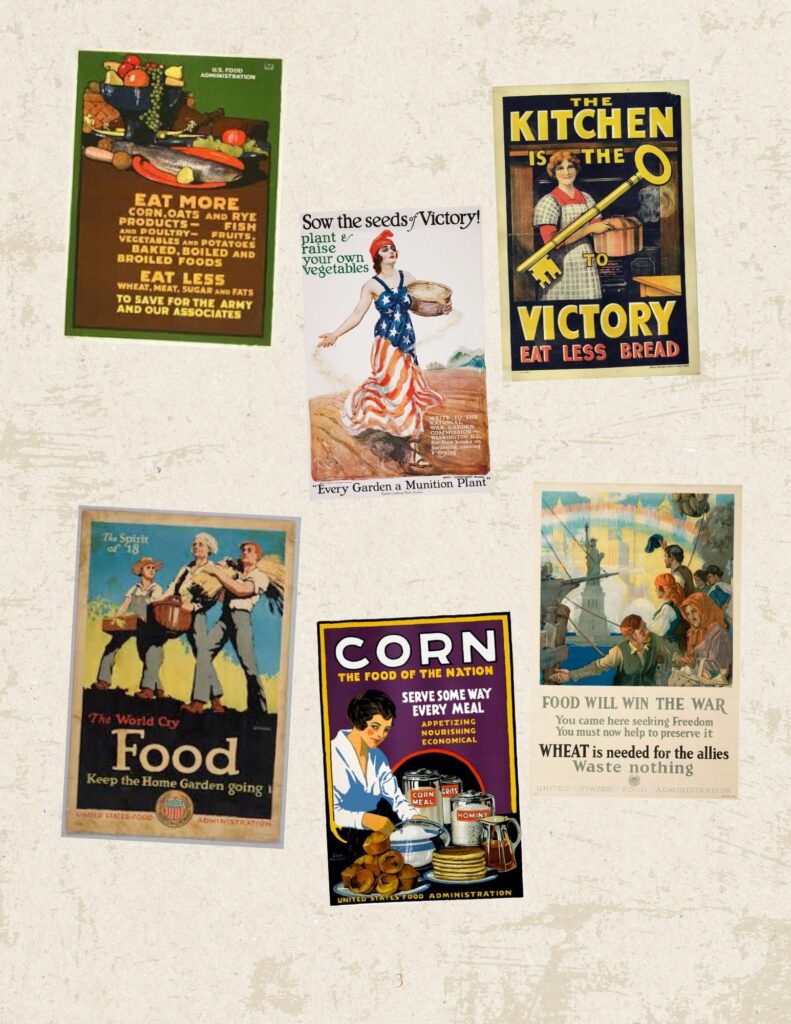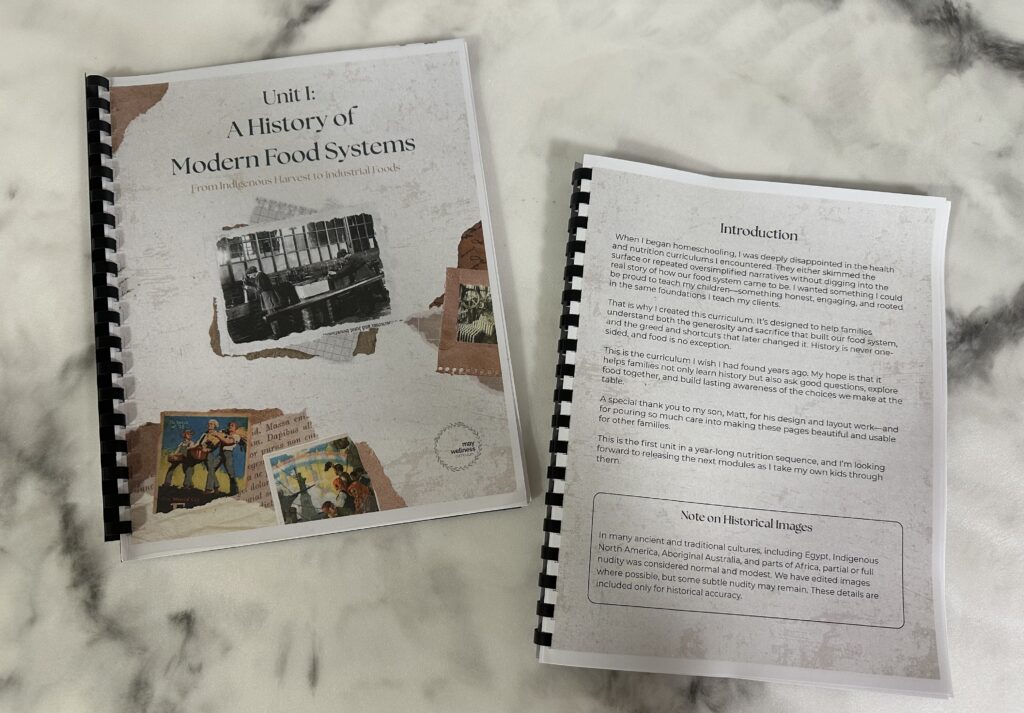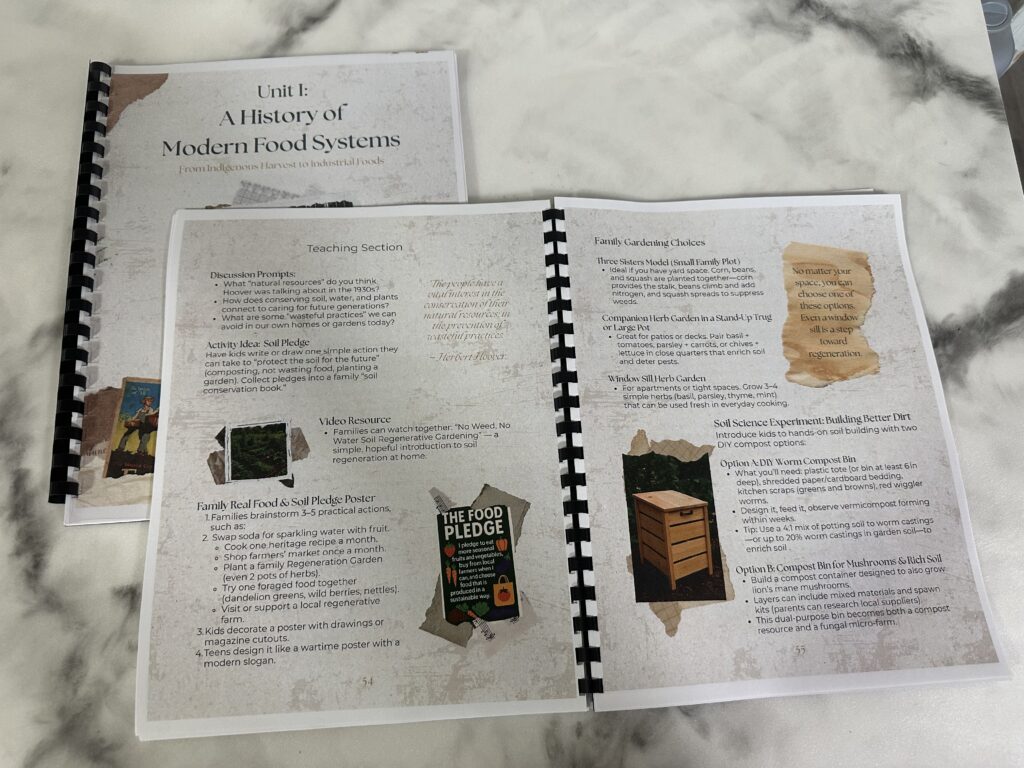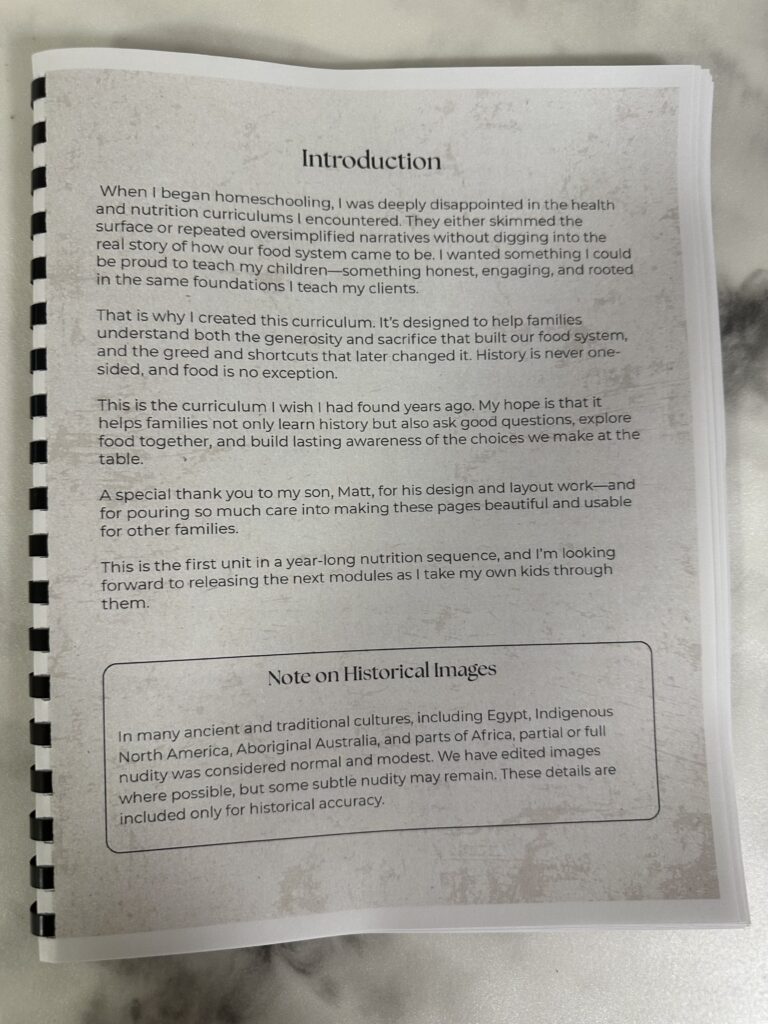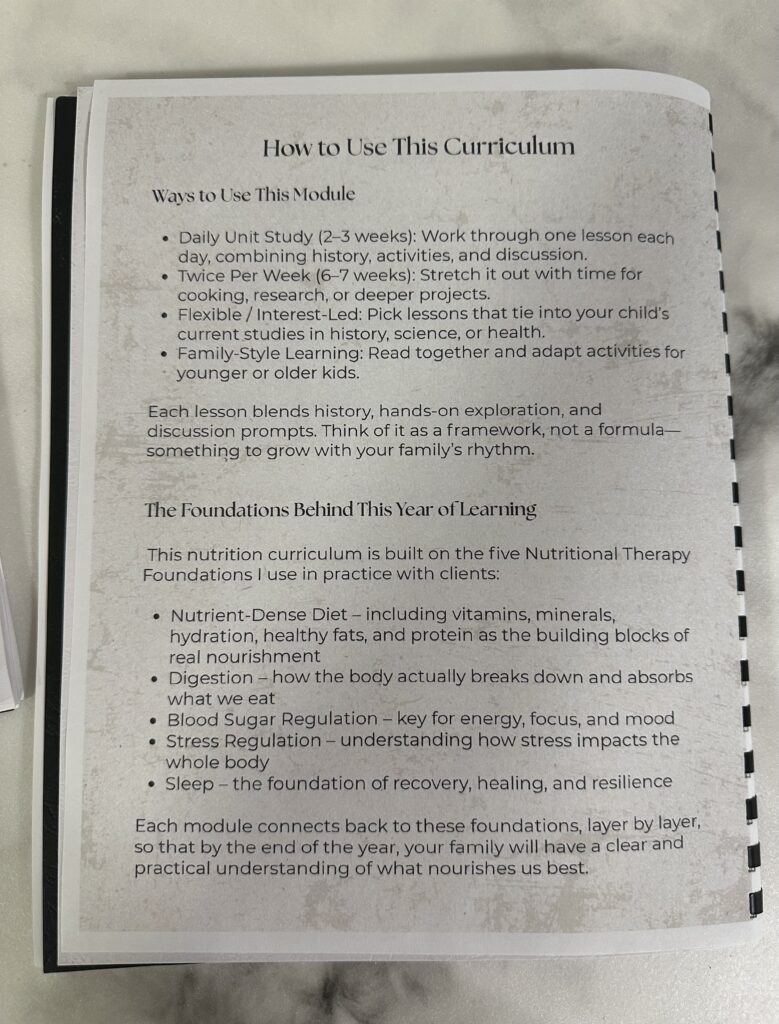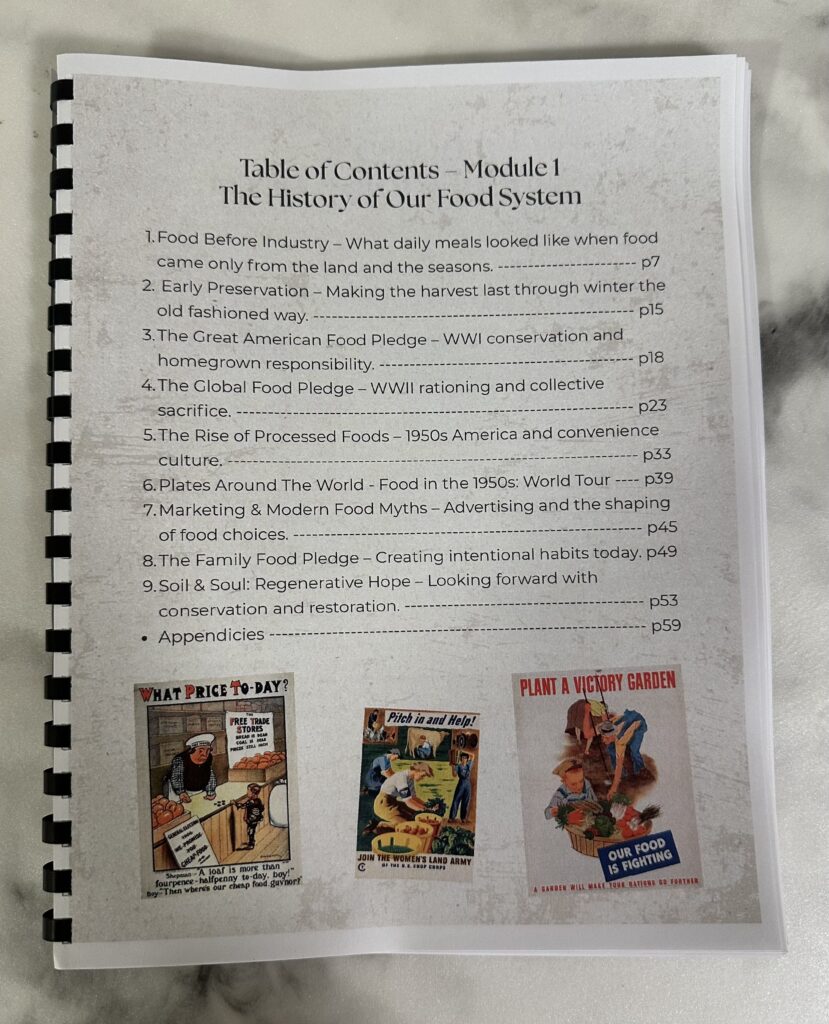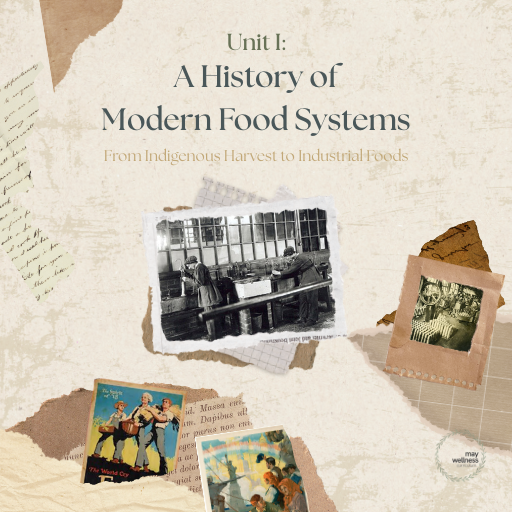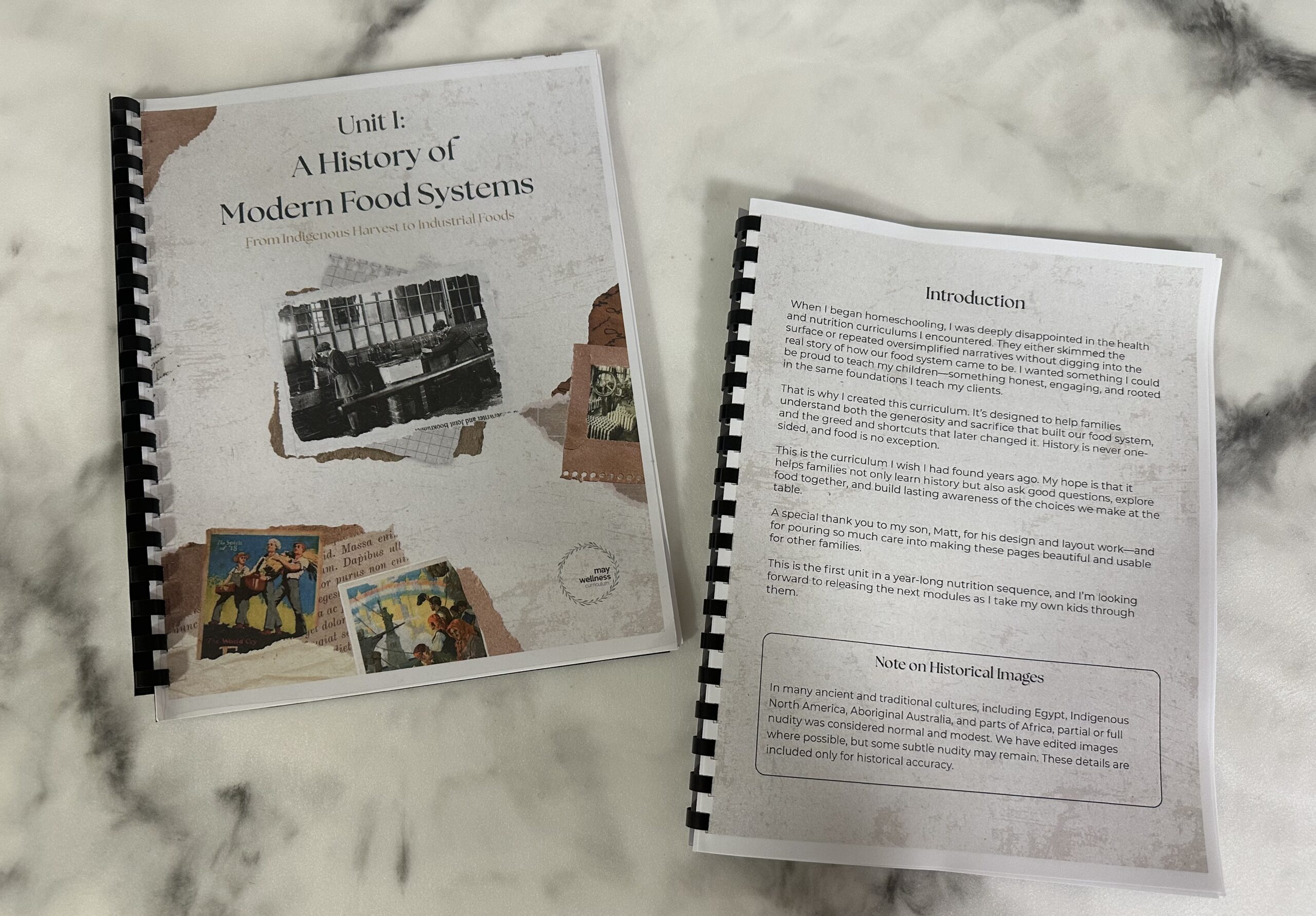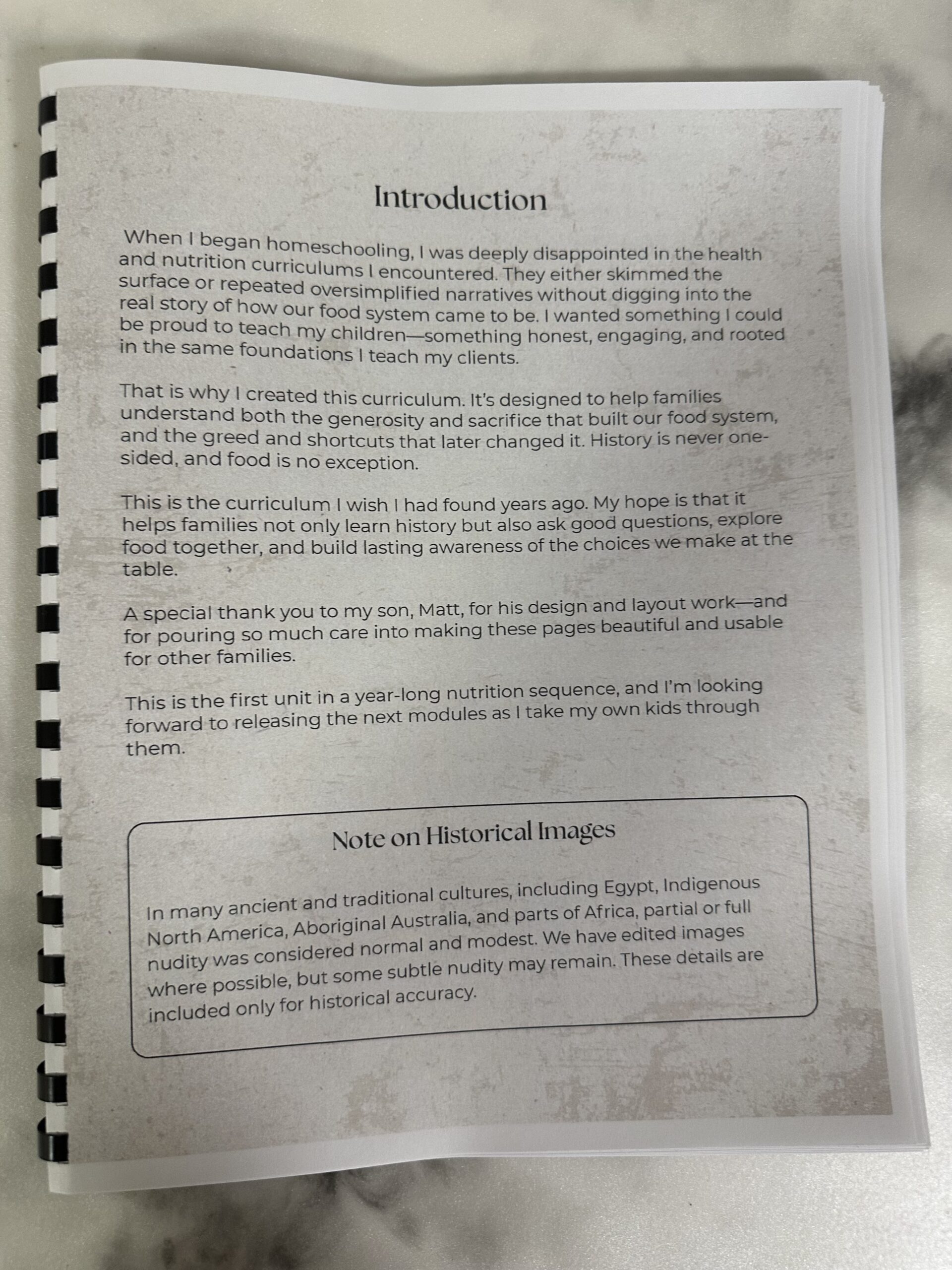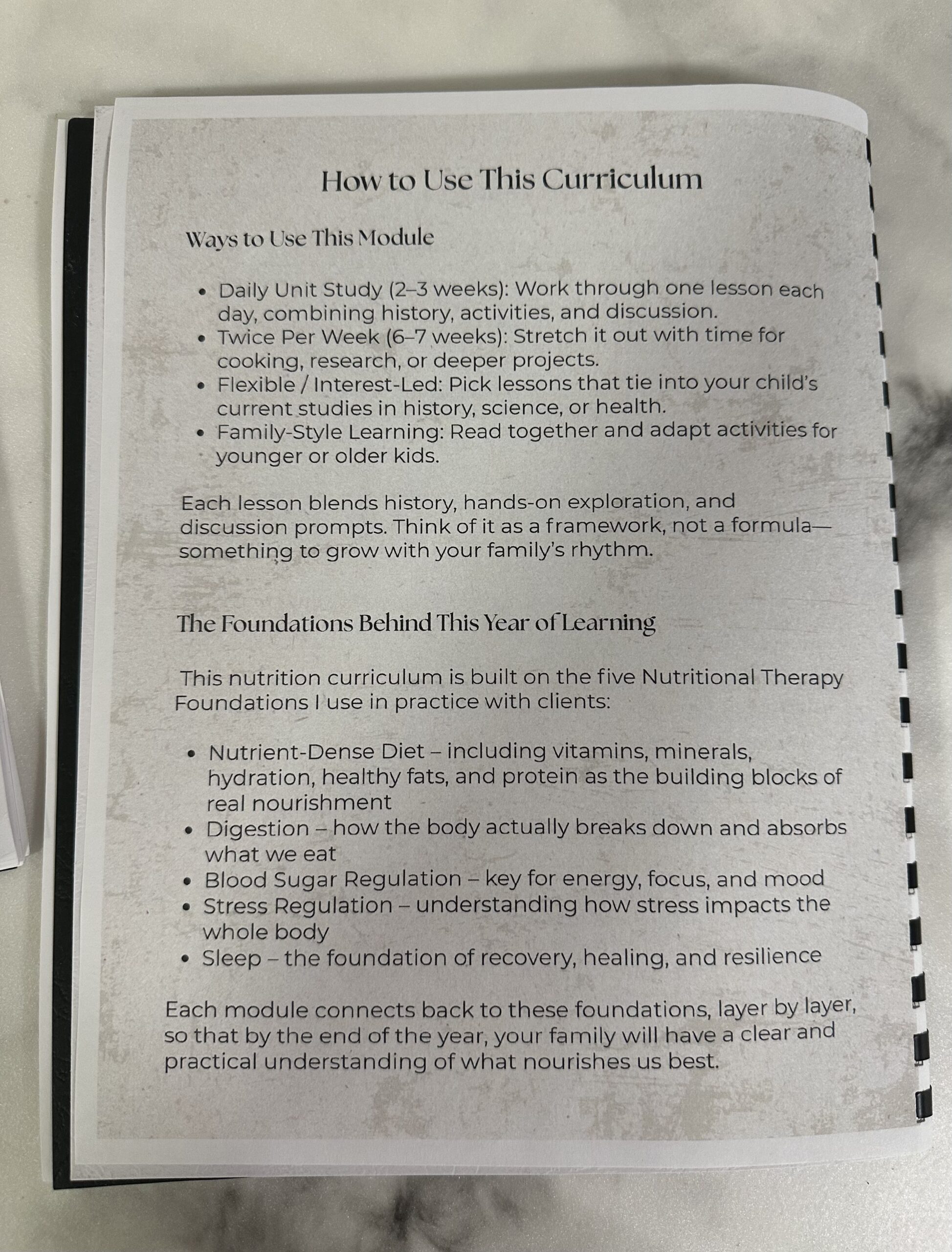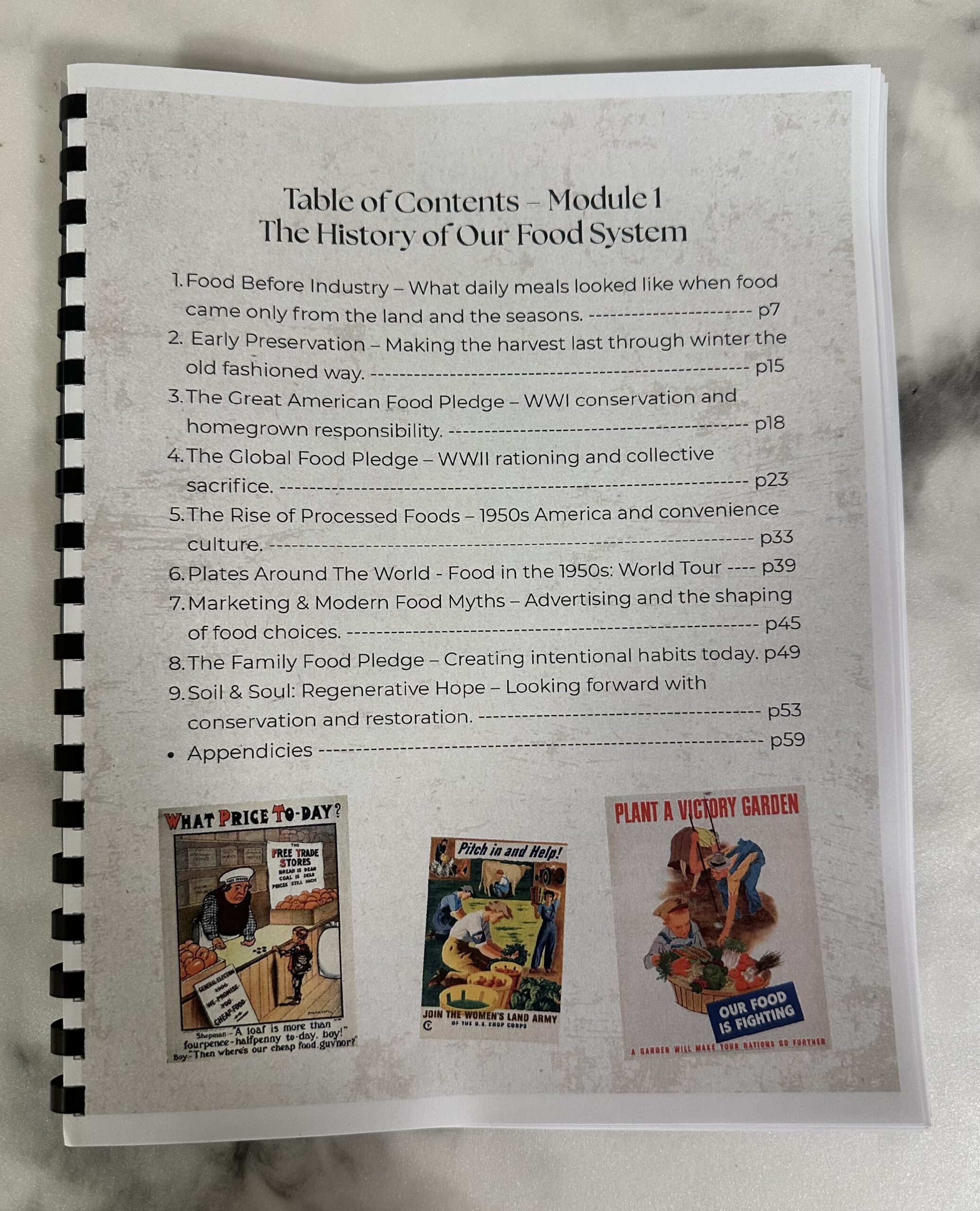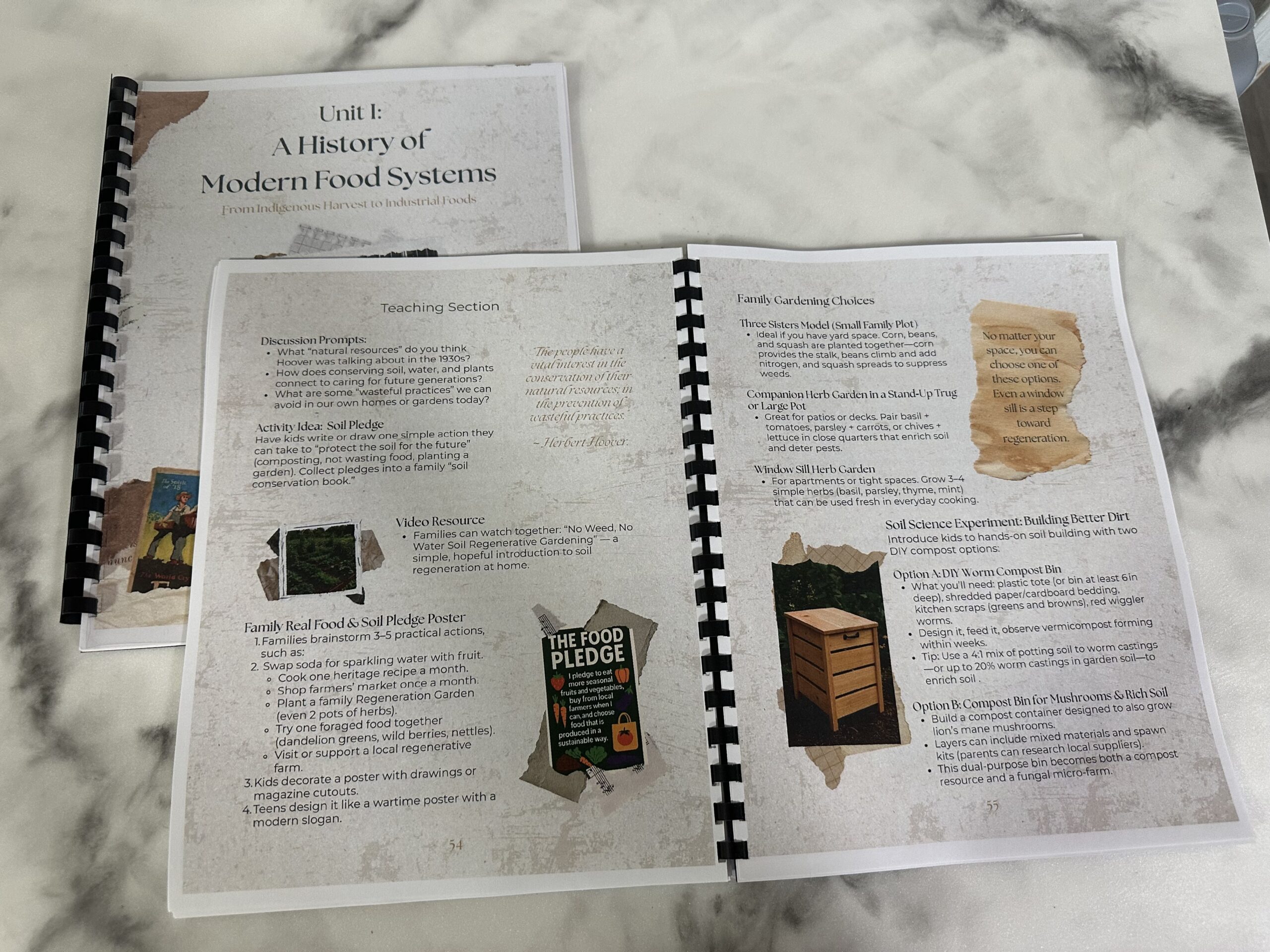Your cart is currently empty!
The History of Our Food System
“Your great-grandmother wouldn’t recognize half the food in your pantry — and neither would your gut.”
When I began my Nutritional Therapy Practitioner training in May 2024, the very first module cracked something open for me: how quickly, and how drastically, our food system has changed.
I already knew we’d lost something in moving from small farms to supermarket shelves. What I didn’t realize was that the first big shifts were actually inspiring. During World War I, American families and farmers mobilized to feed Europe. Victory gardens, rationing, and seasonal eating weren’t trendy—they were survival. It was a living example of resilience and community at scale.
But what started as emergency measures didn’t stay that way. Over the decades, those temporary adaptations were industrialized, politicized, and monetized. The very systems that once helped nations survive war eventually reshaped our food supply into something unrecognizable. What began with sacrifice and ingenuity turned into profit and policy—decisions made less for nourishment and more for efficiency, shelf life, and sales.
In just 100 years, we’ve gone from:
- Seasonal, local, nutrient-dense food
- To year-round, chemically preserved, nutrient-stripped food-like products
That shift hasn’t just changed our waistlines — it’s changed our kids’ brains, behavior, and resilience.
Why This Matters for Families (and Homeschoolers)
If you’re teaching your kids history, science, or health this year, you can’t skip this part of the story. Food isn’t just about what’s on the dinner table — it’s a living history lesson. And once your kids understand how food has changed, they’ll never look at a grocery store aisle the same way again.
This is one of those “ah-ha” history connections that makes school come alive: the Industrial Revolution didn’t just change factories and cities — it changed our bodies.
Four Shifts That Changed Our Food Forever
1. The Industrial Food Shift
The move from small family farms to industrial agriculture brought efficiency and scale—but at a cost. Biodiversity was replaced by uniform crops, chemical fertilizers replaced soil health, and distance replaced community.
2. The Rise of Processed Foods
Sugar, refined flour, and industrial seed oils became the “big three” of cheap calories. They were easy to store, easy to transport, and easy to sell. But they stripped food of nutrients our bodies depended on — creating the first modern nutrient gaps.
3. Marketing Rewired Our Taste Buds
Fortified cereals, neon-colored snacks, and TV dinners weren’t just inventions — they were sold to us with jingles, mascots, and promises of health. “Fortified” sounded scientific, but it never made up for what was lost.
4. Government Policy Shaped the Menu
From crop subsidies to the infamous food pyramid, policy told us what “healthy” was supposed to look like — often to the benefit of industries, not families. (Yes, corn and soy got a bigger boost than beef and eggs.)
Action Steps for Parents
This doesn’t have to stay theoretical. Here are three ways to turn food history into family action this week:
- Visit a farm or farmers’ market with your kids. Let them see who grows their food.
- Do a grocery store field trip. Pick 3 boxes and practice reading labels for sugars, dyes, and oils.
- Cook one recipe a week from before the 1950s. It’s history, science, and nutrition rolled into one. (Although I’d recommend subbing out any unhealthy fats for butter, avocado oil and tallow or lard so it stays nutrient dense and heart healthy)
Ready to Take This Further?
If you’d like a ready-to-use homeschool unit study on The History of Food — I’ve created a 20-page printable guide with:
- A full illustrated timeline
- Discussion questions by grade level
- Worksheets & projects (ages 4–18)
- A handful of historical recipes to cook together
👉 Grab the printable [here] and make it part of your curriculum this year.
Want a ready-to-use Homeschool Unit Study on The History of Food? My printable guide has a full timeline, discussion questions, primary source links, and age-appropriate projects — ready to plug into your school year. Includes activities for ages 4–18.
Nourish – Unit 1: From Indigenous Harvest to Industrialized Food
$77.00
Discover 500 years of food history in this open-and-go homeschool curriculum. Unit 1 of Nourish takes families from Indigenous harvest traditions through the rise of modern industrialized food systems — with ready-to-use lessons, activities, and printables.
Description
Founding Family Beta Launch — Limited Time Pricing!
Join as a Founding Family and help shape the full Nourish curriculum while it’s in development. For a short time, Unit 1: From Indigenous Harvest to Industrialized Food is available at our special beta price of $37 (regularly $77).
This open-and-go module explores 500 years of food history with ready-to-use lessons, activities, and printables designed for one-room schoolhouse style learning. Perfect for mixed ages, this curriculum makes it simple to gather your family around the table and dive into the story of food together.
Don’t miss this early access opportunity — Founding Family pricing ends September 14th.
